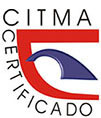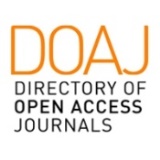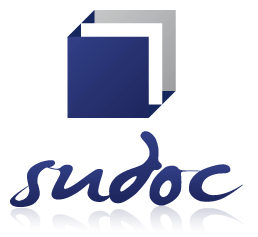Spanish as spoken in the Caribbean space at the end of the 16th century: reflections in the Histoire naturelle des Indes or «Drake manuscript»
Abstract
Introduction: We propose a linguistic analysis of the Histoire naturelle des Indes, an anonymous manuscript that presents the fauna, flora, as well as colonial and indigenous life in the Caribbean Basin at the end of the 16th century. Although written in French, the document shows numerous Hispanisms.
Methods: We will apply methods of Contact Linguistics, such as etymological, lexical and phonetic-phonological analysis, to the Hispanisms of the manuscript, in order to reconstruct the state of evolution of the Spanish spoken at that time in that area.
Results: We will show that some lexical uses that today characterize the Spanish spoken in Venezuela, Colombia and the Antilles are already present in the French manuscript, long before they manifest themselves in the Spanish documentation. In addition, the kind of Spanish that the authors heard around them had a southern (Andalusian) imprint.
Conclusions: Taken together, the analysis illustrates the importance of considering the Caribbean as a contact zone. Any attempt to understand or reconstruct the history of Caribbean Spanish must necessarily take into account the other languages that have coexisted with it in the multilingual space of the Caribbean basin.
Downloads
References
ARVEILLER, R. (1963). Contribution à l’étude des termes de voyage en français (1505-1722). Paris: Éditions D’Artrey.
BARRAL, B. M. (1979). Diccionario Warao-Castellano, Castellano-Warao. Caracas: Litografía Melvin.
BRAULT, G. (1961). Early Hispanisms in French 1500-50. Romance Philology 15, 129–138.
BROCHARD, M.-J. CHAMBON, J. P. (1991). La localisation du Peck Manuscript. Bibliothèque d’Humanisme et Renaissance 53, 405-414.
BRETON, R. (1999 [1665]). Dictionnaire caraïbe-français. Nouvelle édition sous la responsabilité de Marina Besada Paisa. París: Ed. Karthala.
CARRERA DE LA RED, M. (1993). Documentos de criollos de Santo Domingo: estado de lengua (ca. 1529-1650). Anuario de letras 31, 526-555.
CORTES, S. (1897). Flora de Colombia. Bogotá: Samper Matiz.
COURTZ, H. (2008). A Carib grammar and dictionary. Toronto: Magoria books.
DA = REAL ACADEMIA ESPAÑOLA/ASOCIACIÓN DE ACADEMIAS DE LA LENGUA ESPAÑOLA (2010). Diccionario de Americanismos. Madrid: Santillana.
DECA = BOLLEE, A.; KERNBICHL, K.; SCHOLZ, U.; WIESINGER, E. (2017-2018): Dictionnaire étymologique des créole français d’Amérique. Sous la direction de Annegret Bollée, Dominique Fattier, Ingrid Neumann-Holzschuh, avec le concours de Philip Baker, Jean-Paul Chauveau, Hector Poullet. Hamburg: Buske.
FERNÁNDEZ ALCAIDE, M. (2009). Cartas de particulares en Indias del siglo XVI: edición y estudio discursivo. Madrid: Iberoamericana/Vervuert.
FRAGO GRACIA, J.A. (1999). Historia del español en América: textos y contextos. Madrid: Gredos.
HENRÍQUEZ UREÑA, P. (1988). El español en Santo Domingo. HENRÍQUEZ UREÑA, P. Obra Dominicana. Santo Domingo: Soc. Dominicana de Bibliófilos, 11–198.
HUALDE, J.I. (2004). Los sonidos del español. Cambridge: Cambridge University Press.
HUBER, R.Q.; REED, R.B. (1992). Vocabulario comparativo: palabras selectas de lenguas indígensa de Colombia. Santafé de Bogotá: Inst. Lingüístico de Verano.
JANICK, J. (2012). Revelations from Histoire Naturelle des Indes known as The Drake Manuscript: Horticulture and History. Chronica Horticulturae 52, 14-22.
JANSEN, S. (2018). L’Histoire naturelle des Indes («Drake manuscript», ca. 1600) à la croisée des langues de l’Amérique coloniale. SCHÄFER-PRIEß, B.; SCHÖNTAG, R. (eds.). Seitenblicke auf die französische Sprachgeschichte. Tübingen: Narr, 191-207.
JANSEN, S. (2021). De la colonia a la dependencia: rumbo a nuevas normas e identidades lingüísticas. ECKKRAMMER, E. (ed.). Manual del español en América. Berlin/New York: de Gruyter, 791-804.
JANSEN, S. (2022). The «language of the Indies» in the Histoire naturelle des Indes or «Drake manuscript». DANLER P.; HARJUS, J. (eds.). Las Lenguas de Las Américas / The Languages of the Indies. Berlin: Logos, 45-60.
KLINGENBORG, V. (1996). Introduction. KLINGENBORG, V. (ed.). Histoire naturelle des Indes / The Drake Manuscript in the Pierpoint Morgan Library. New York. [https://www.themorgan.org/collection/Histoire-Naturelle-des-Indes].
KLUMP, A. (2002). Historische Aspekte der spanischen Sprache in Santo Domingo (16. und 17. Jahrhundert). Frankfurt a.M.: Lang.
LexHis = BOYD-BOWMAN, P. (2003). Léxico hispanoamericano 1493 – 1991. New York, Hispanic Seminary of Medieval Studies.
PARODI, C. (1995). Orígenes del español americano. México D.F.: Universidad Nacional Autónoma de México.
RIBEIRO DE CARVALHO, M. (1987). Dicionário Tupi (antigo) – Português. Salvador: Biblioteca Central da Bahia.
SÁNCHEZ MÉNDEZ, J.P. (2003). Historia de la lengua española en América. Valencia: Tirant lo Blanch.
TAYLOR, D. (1946). Loan Words in Dominica Island Carib. International Journal of American Linguistics 12, 213–216.
TLFi = Trésor de la langue Française informatisé [http://www.atilf.fr/tlfi]. ATILF - CNRS & Université de Lorraine.
VARGAS MACHUCA, B. (1892 [1599]). Milicia y descripción de las Indias escrita por el capitán D. Bernardo de Vargas Machuca, caballero castellano, natural de la villa de Simancas. Madrid: Librería de Victoriano Suárez.
Downloads
Published
How to Cite
Issue
Section
License
Copyright (c) 2023 Silke Jansen

This work is licensed under a Creative Commons Attribution-NonCommercial 4.0 International License.
Usted es libre de:
Compartir — copiar y redistribuir el material en cualquier medio o formato
Adaptar — remezclar, transformar y construir a partir del material
La licenciante no puede revocar estas libertades en tanto usted siga los términos de la licencia
Bajo los siguientes términos:
Usted es libre de:
Atribución — Usted debe dar crédito de manera adecuada, brindar un enlace a la licencia, e indicar si se han realizado cambios. Puede hacerlo en cualquier forma razonable, pero no de forma tal que sugiera que usted o su uso tienen el apoyo de la licenciante.
NoComercial — Usted no puede hacer uso del material con propósitos comerciales.
No hay restricciones adicionales — No puede aplicar términos legales ni medidas tecnológicas que restrinjan legalmente a otras a hacer cualquier uso permitido por la licencia.


















